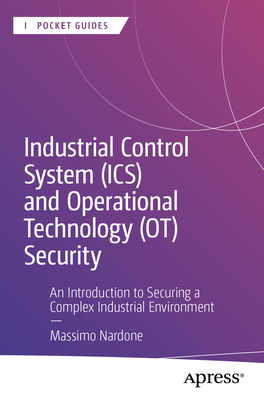Critical Infrastructure Protection in Homeland Security: Defending a Networked Nation
暫譯: 國土安全中的關鍵基礎設施保護:捍衛網絡化國家
Ted G. Lewis
- 出版商: Wiley
- 出版日期: 2006-04-21
- 售價: $4,130
- 貴賓價: 9.5 折 $3,924
- 語言: 英文
- 頁數: 486
- 裝訂: Hardcover
- ISBN: 0471786284
- ISBN-13: 9780471786283
-
相關分類:
Penetration-test
海外代購書籍(需單獨結帳)
買這商品的人也買了...
-
 LDAP 系統管理 (LDAP System Administration)
LDAP 系統管理 (LDAP System Administration)$620$490 -
 ASP.NET 徹底研究進階技巧─高階技巧與控制項實作
ASP.NET 徹底研究進階技巧─高階技巧與控制項實作$650$507 -
 實戰 PHP 5 & MySQL 5 (PHP and MySQL Web Development, 3/e)
實戰 PHP 5 & MySQL 5 (PHP and MySQL Web Development, 3/e)$680$578 -
 網頁設計最重要的 10 堂課
網頁設計最重要的 10 堂課$490$417 -
 最新詳解 Javascript & HTML & CSS 語法辭典(增訂新版)
最新詳解 Javascript & HTML & CSS 語法辭典(增訂新版)$490$382 -
 Dreamweaver 8 魔法書中文版
Dreamweaver 8 魔法書中文版$490$417 -
 Flash 8 躍動的網頁中文版
Flash 8 躍動的網頁中文版$550$468 -
 紅色風暴 II 3ds max 室內設計實例教程-渲染篇
紅色風暴 II 3ds max 室內設計實例教程-渲染篇$790$624 -
 如何設計好網站 (Don't Make Me Think: A Common Sense Approach to Web Usability, 2/e)
如何設計好網站 (Don't Make Me Think: A Common Sense Approach to Web Usability, 2/e)$450$383 -
 鳥哥的 Linux 私房菜基礎學習篇, 2/e
鳥哥的 Linux 私房菜基礎學習篇, 2/e$780$663 -
 Microsoft SQL Server 2005 設計實務
Microsoft SQL Server 2005 設計實務$680$578 -
 ASP.NET 2.0 深度剖析範例集
ASP.NET 2.0 深度剖析範例集$650$507 -
 SQL Server 2005 Reporting Services 報表服務實務應用
SQL Server 2005 Reporting Services 報表服務實務應用$620$484 -
 Microsoft SQL Server 2005 管理實務
Microsoft SQL Server 2005 管理實務$680$578 -
 Linux 驅動程式, 3/e (Linux Device Drivers, 3/e)
Linux 驅動程式, 3/e (Linux Device Drivers, 3/e)$980$774 -
 Ajax Hacks 駭客八十招
Ajax Hacks 駭客八十招$580$458 -
 Dreamweaver 搞不定的網頁設計效果:CSS 關鍵救援密碼
Dreamweaver 搞不定的網頁設計效果:CSS 關鍵救援密碼$520$442 -
 操作介面設計模式 (Designing Interfaces)
操作介面設計模式 (Designing Interfaces)$880$695 -
 Ajax 實戰手冊 (Ajax in Action)
Ajax 實戰手冊 (Ajax in Action)$680$537 -
 Ajax 技術手冊 (Foundations of Ajax)
Ajax 技術手冊 (Foundations of Ajax)$450$356 -
 世紀末軟體革命復刻版:C++、GUI 與物件導向理論
世紀末軟體革命復刻版:C++、GUI 與物件導向理論$620$527 -
 Ajax 快速上手 (Head Rush Ajax)
Ajax 快速上手 (Head Rush Ajax)$780$616 -
 SQL Server 2005 資料庫程式開發達人手冊, 2/e
SQL Server 2005 資料庫程式開發達人手冊, 2/e$680$537 -
 聖殿祭司的 ASP.NET 2.0 專家技術手冊─使用 C#
聖殿祭司的 ASP.NET 2.0 專家技術手冊─使用 C#$720$569 -
 The Engineering of Foundations (美國版ISBN:0072500581)
The Engineering of Foundations (美國版ISBN:0072500581)$960$941
商品描述
A scientific approach to the new field of critical infrastructure protection
This book offers a unique scientific approach to the new field of critical infrastructure protection: it uses network theory, optimization theory, and simulation software to analyze and understand how infrastructure sectors evolve, where they are vulnerable, and how they can best be protected. The author demonstrates that infrastructure sectors as diverse as water, power, energy, telecommunications, and the Internet have remarkably similar structures. This observation leads to a rigorous approach to vulnerability analysis in all of these sectors. The analyst can then decide the best way to allocate limited funds to minimize risk, regardless of industry sector.
The key question addressed in this timely book is: What should be protected and how? The author proposes that the answer lies in allocating a nation's scarce resources to the most critical components of each infra-structure—the so-called critical nodes. Using network theory as a foundation, readers learn how to identifya small handful of critical nodes and then allocate resources to reduce or eliminate risk across the entire sector.
A comprehensive set of electronic media is provided on a CD-ROM in the back of the book that supports in-class and self-tutored instruction. Students can copy these professionally produced audio-video lectures onto a PC (Microsoft Windows® and Apple Macintosh® compatible) for repeated viewing at their own pace. Another unique feature of the book is the open-source software for demonstrating concepts and streamlining the math needed for vulnerability analysis. Updates, as well as a discussion forum, are available from www.CHDS.us.
This book is essential for all corporate, government agency, and military professionals tasked with assessingvulnerability and developing and implementing protection systems. In addition, the book is recommended for upper-level undergraduate and graduate students studying national security, computing, and other disciplines where infrastructure security is an issue.
Table of Contents
Preface.
About the Author.
1. Strategy.
2. Origins.
3. Challenges.
4. Networks.
5. Vulnerability Analysis.
6. Risk Analysis.
7. Water.
8. SCADA.
9. Power.
10. Energy.
11. Telecommunications.
12. Internet.
13. Cyber-Threats.
14. Cyber-Security.
商品描述(中文翻譯)
**描述**
這本書提供了一種獨特的科學方法來應對新興的關鍵基礎設施保護領域:它利用網路理論、優化理論和模擬軟體來分析和理解基礎設施部門的演變、脆弱性所在,以及如何最佳地進行保護。作者展示了水、電力、能源、電信和互聯網等多樣化的基礎設施部門具有驚人相似的結構。這一觀察導致了對所有這些部門進行脆弱性分析的嚴謹方法。分析師可以決定最佳的資金分配方式,以最小化風險,無論行業部門如何。
這本及時的書籍所探討的關鍵問題是:應該保護什麼,如何保護?作者提出,答案在於將國家的稀缺資源分配給每個基礎設施中最關鍵的組件——所謂的關鍵節點。以網路理論為基礎,讀者將學習如何識別少數幾個關鍵節點,然後分配資源以減少或消除整個部門的風險。
本書後面附有一套全面的電子媒體,包含在CD-ROM中,支持課堂和自學教學。學生可以將這些專業製作的音視頻講座複製到PC(兼容Microsoft Windows®和Apple Macintosh®)上,以便隨時重複觀看。這本書的另一個獨特特點是開源軟體,用於演示概念並簡化脆弱性分析所需的數學。更新以及討論論壇可從 www.CHDS.us 獲得。
這本書對於所有負責評估脆弱性以及開發和實施保護系統的企業、政府機構和軍事專業人員來說都是必不可少的。此外,這本書也推薦給學習國家安全、計算機及其他基礎設施安全問題的高年級本科生和研究生。
**目錄**
前言
關於作者
1. 策略
2. 起源
3. 挑戰
4. 網路
5. 脆弱性分析
6. 風險分析
7. 水
8. SCADA
9. 電力
10. 能源
11. 電信
12. 互聯網
13. 網路威脅
14. 網路安全














